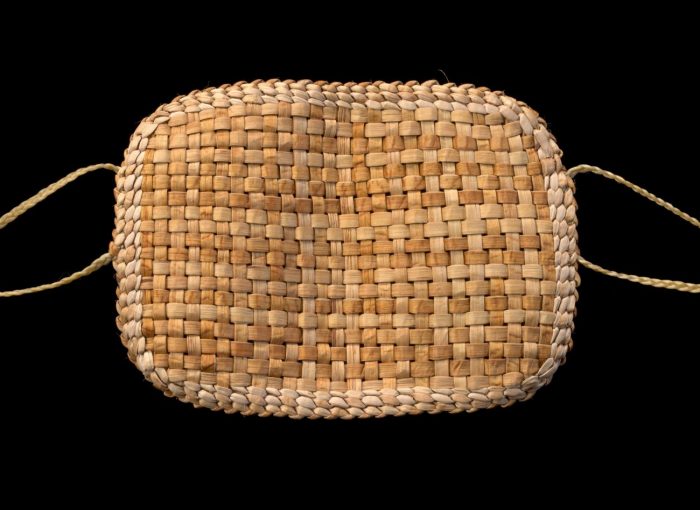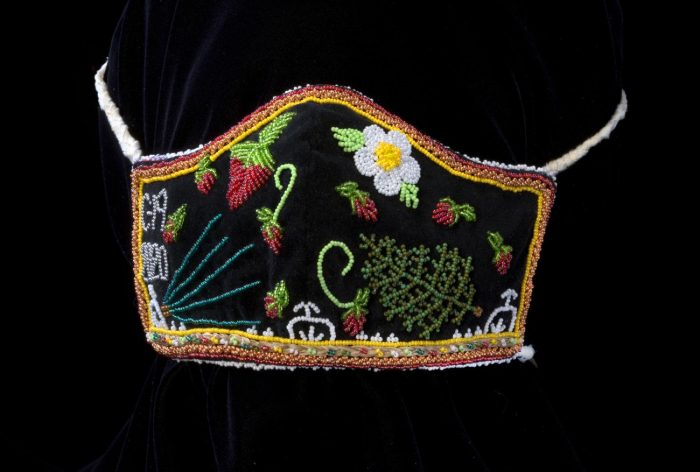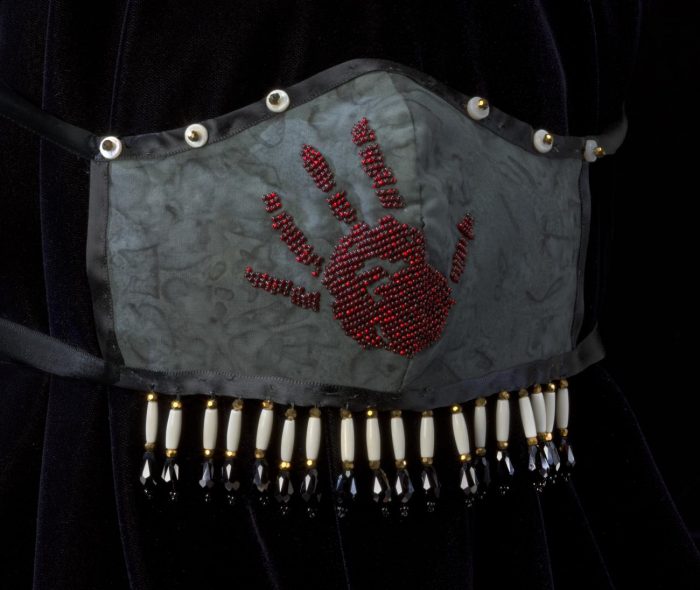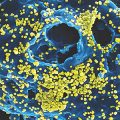Using tribal traditions to interpret a modern necessity
An online exhibition shows how Native artists are creating messages of strength, resilience and hope during the COVID-19 pandemic.
Inside a glass exhibit case just to the right at the top of the grand staircase in the American Art Museum’s Renwick Gallery are three finely crafted Native American objects made in response to the COVID-19 pandemic. Look carefully or you will miss them.
Skilled beadwork artists and basket makers, three Native women from the Northwest Coast, Midwest and Northeast used a variety of materials and techniques from their tribal traditions to create what has suddenly become a contemporary necessity: protective face coverings.
“Each mask carries a message of strength, resilience and hope and two appear in the online exhibition Masked Heroes: Facial Coverings by Native Artists presented by the First American Art Magazine, which included more than 100 works by 73 artists,” the text on the exhibit case reads.
On view in the Renwick are:
“Yellow Cedar Face Mask,” 2020, by Vicki Lee Soboleff (Haida/Tinglit) (Soboleff’s “Just Ovoid It,” also made from yellow cedar, appears in the online exhibition.)

“Ononkwashon:a (Medicine Plants),” 2020, by Marlana Thompson (Mohawk Nation of Akwesasne) made from velveteen, flannel, beads, sweetgrass, sage and leather; and

“MMIW,” 2020, by Katria Mitten (Miami Tribe of Oklahoma) and made from cotton, ribbon, beads, bone and shell.

Learn more about these masks at SAAM’s blog site: Eye Level
Posted: 30 November 2020
-
Categories:
American Art Museum , Art and Design , Feature Stories , Renwick Gallery







